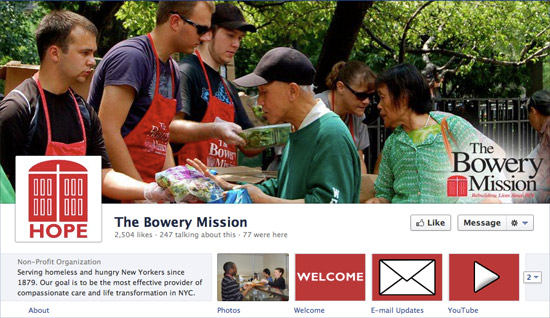
Target audience: Nonprofits, foundations, NGOs, social enterprises, cause organizations, brands, businesses, Web publishers, educators, journalists, general public.
 The new Facebook page Timeline layout changes the way your organization needs to think about content.
The new Facebook page Timeline layout changes the way your organization needs to think about content.
Previously, a Facebook Page content strategy was primarily focused on two things:
• Custom tabs – The the content strategy for Welcome pages (custom landing tabs) focused on engaging visitors with a clear call to action in mind. For example, Welcome pages encourage users to join and or share a fundraising campaign. They were also used as a way to convert Facebook fans to join your list or otherwise engage with your organization.
• The news feed – The content strategy for the news feed focused on engaging Facebook fans in the hopes that greater awareness would be spread through virality. For example, you’d post a photo and a fan would like it, which automatically posts an update on their news feed for their friends to see.
The news feed hasn’t changed, and so to some degree your content strategy is still about what’s happening now. But Facebook Pages now make it about the past, present and future as well!
Here are 11 things to consider in your new Facebook content strategy:
1Your second website – The Timeline allows visitors to your page to interact with a story that has a beginning, a middle and a now. Facebook users can flip through the pages in your story in a variety of ways (as shown below).
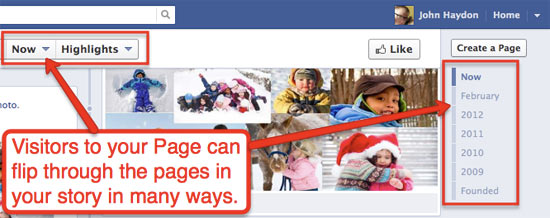
Now don’t get me wrong – the news feed is and will be where all the action is. But Facebook users will soon start seeing your Facebook Page in the same way they see your website. They’ll visit to see what’s new, what’s important, and what their friends care about.
2Tell a story in your cover image – Think of your cover image as taking the place of the default landing tab (more on that below). The purpose of your cover image is to create a powerful first impression that will convert.
Beth Kanter has put together an amazing collection of orgs that are using cover images effectively.
Rotate your cover image. You can keep fans interested by frequently rotating your cover image, communicating freshness, spontaneity and dynamism around your brand.
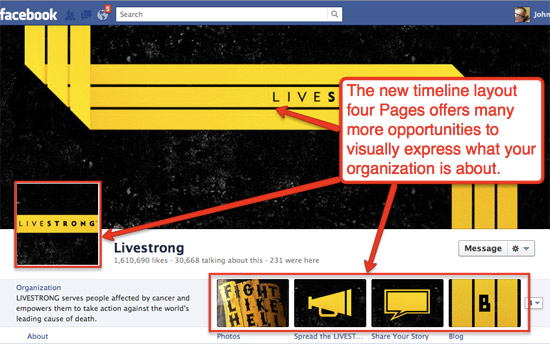
3Soft sell – Facebook says that your cover image should not be used for calls to action like “Donate now” or “Sign our email list.” You also can’t include any contact information like URLs, or reference any features on your Facebook page such as the Like button.
4Simplify your profile picture – The new profile picture (aka avatar) is now 180 pixels square. This means that you can no longer include a call to action (as some organizations did previously).
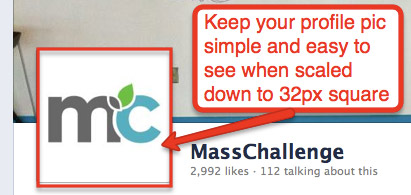
Because this image will be as small as 30 pixels square, it’s best to use only your logo. You don’t need to include the name of your organization in your main avatar because the name of your Facebook page travels with your avatar everywhere on Facebook.
5Complete your About section – The About section has more prominence just below the cover image. This will include your address and contact information if you have a Facebook place, or just a brief description if you have a Facebook page (as shown below).
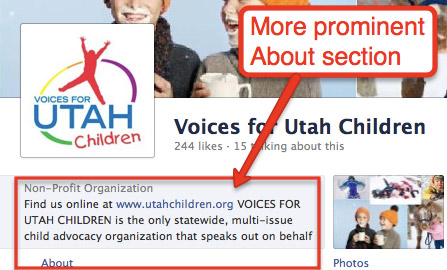
6Create milestones – Up until now, anything posted on the Facebook page was automatically tagged with the date it was posted. Milestones allow you to select any date in the past.
![]()
The picture for Milestones can be up to 843 pixels by 403 pixels.
7Direct attention with highlights and pins – Up until now Facebook administrators had little control over how posts were displayed on their page. and visitors to that page would see updates in either reverse chronological order or in an order determined by Facebook’s EdgeRank.
Pages now allow you to control feature specific posts on your page through highlighting or pinning. Highlighting turns any page story – which normally occupies a single column – into a full-width story (as shown below). This is perfect for large horizontal photos (dimensions for highlighted photos are 846 by 403 pixels).
Pinning allows you to give any page story more attention by moving any page story to the top of your Facebook page. When you pin something on your page, it remains at the top of your Timeline for seven days, or until you unpin it, so it’s a good idea to think about what you want to feature at the top of your page each week (shown below).
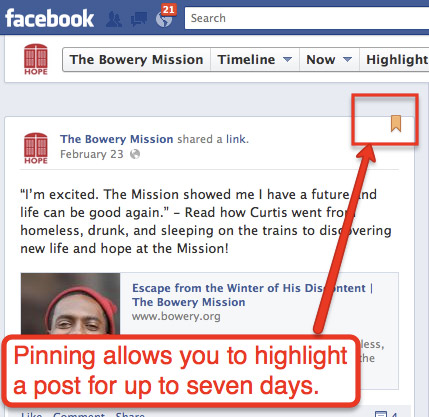
8Focus on photos – Again, Facebook Pages are now much more about your visual story told over time, rather than what’s happening now. As much as possible, it’s best to focus on telling that story through images and other visual content. Think Pinterest.
9No default tabs – You’ve probably heard by now that Facebook pages will no longer have the ability to set a default tab for nonfans. Default tabs in the past were primarily used as a way to increase fan conversion rates on a page. Now you’ll have to do that with your cover image, highlights and other ways to make that first impression.
10No hard-sell messaging – Facebook pages also have a messaging feature that allows visitors to send you a private message. It may be really tempting to sell them on why they should donate or volunteer, but it’s better to use these opportunities to nurture a relationship on their terms. Keep in mind, they are messaging you – not the other way around. Also, you are limited to two messages for every one they receive.
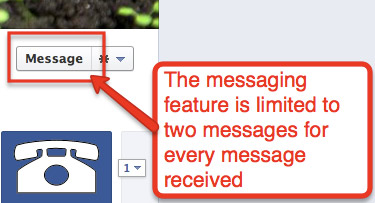
11Not about you – At first glance you might assume that the story you’re supposed to tell is your organization’s story. But this may not be an interesting story, nor is it the real story. The story you must tell has to be bigger than you. It has to be about the cause. It has to be about your community.
Share your Facebook Page
Post a link to your Facebook Page in the comments below so we can all see!
Also, check out this video tutorial on everything you need to know about converting your Page over to the new Timeline.
How are you using the new Timeline features?
Related
• What Facebook Timeline apps are really all about (Socialbrite)
• Facebook Timeline apps: A new way to engage (Socialbrite)
• Why Timeline is a colossal blunder for Facebook (Socialmedia.biz)John Haydon delivers social web strategy solutions for “the quick, the smart, and the slightly manic.” Curious? Then visit the John Haydon blog, follow him on Twitter or leave a comment.
 This work is licensed under a Creative Commons Attribution-NonCommercial 3.0 Unported.
This work is licensed under a Creative Commons Attribution-NonCommercial 3.0 Unported.









the Chesapeake Bay Trust timeline: https://www.facebook.com/chesapeakebaytrust
This is a great list, thank you so much for sharing! Lots of great things to keep in mind.
All really fantastic points. This is probably the best post on the Facebook Timeline I’ve seen so far. It’s a good summary on the ideology shift and the focus on visuals. Still trying to figure out our own strategy. Thanks!
blog.firstgiving.com
Facebook.com/firstgiving
Thanks, Dan, yes, there’s a lot to figure out before Facebook throws the switch and converts all pages over to Timelines on March 30!
The Believe In Tomorrow Children’s Foundation! http://www.facebook.com/BelieveinTmw?ref=tn_tnmn this was very helpful!
I’m working on a blog post for our Duke University community to educate everyone on the new timeline features, and this was very helpful! Thanks.
Duke’s Facebook Page: http://www.facebook.com/DukeUniv.
http://www.facebook.com/hatsnheelswomeninbusiness
thanks for your Facebook Pages tips post. It is indeed informative and excellent.
Very good article! Thank you for your review :)
http://www.facebook.com/akshayapatrafoundation